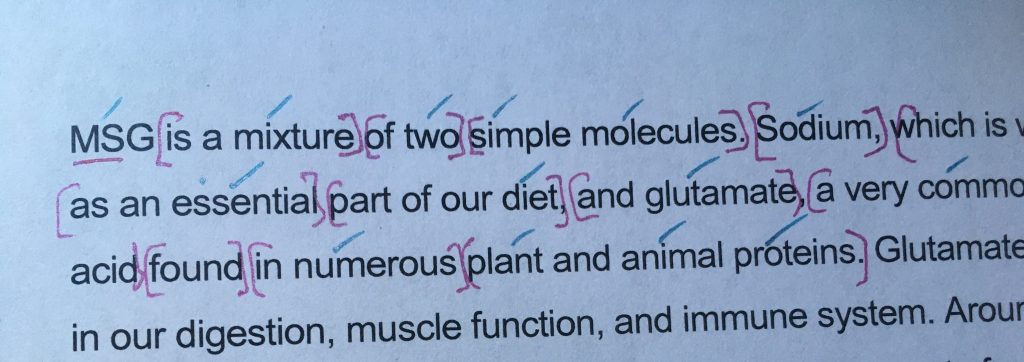In this post, we’ll look at a quick exercise you can do to work on listening comprehension.
If you’ve just gotten to campus, you may be feeling like everyone is talking a million words a minute and it’s impossible to keep up (and it’s probably harder if you are reading this while everyone on campus is wearing a mask). First, let me assure you that it will get easier over time, whether you do any practice or not.
But! It is very frustrating to feel left out of discussions and conversations. And sometimes you want to feel like you have something to do to help yourself improve. So let’s take a look at this exercise. All you need is a video or audio clip that has a transcript (subtitles are also ok). I like to use the TED talks at ted.com because they are relatively short, have speakers with a variety of different accents, cover a wide range of topics, and have excellent transcripts right below the video.
Remember, as with almost all the strategies you’ll find on this page, it is better to do short, consistent practice sessions that you can maintain, rather than trying to do a ton of work at once. 10 minutes a day; or 5 minutes twice a day; or 15 minutes every 2 days–that’s the goal.
Transcript Exercise
Work in 1-2 minute chunks. First, watch the video with the transcript. Make sure you understand what the speaker is saying. Look for the key words. Then, turn off subtitles, scroll up, or close your eyes, and listen to the same segment again. Doing that for a few minutes at time, for the length of a short video, should help you with listening comprehension.
Why? Let’s discuss that a little. English is a stress-timed language. Not every syllable gets the same amount of time; instead, stressed syllables come at regular times and all the other syllables get smushed together to fit in. So you don’t hear:
How . Are . You?
Instead you get:
howr . YOU?
It can be quite difficult to separate out words in a speech stream moving at a good speed. Looking at a transcript first gives your brain some hints to help it pick out individual words.
Extension
If you want something a little more hands-on, you can add to this activity by looking at the transcript and trying to figure out how the words will be grouped together. Here’s an example using Sara Tracy’s talk on MSG
I am going to take a small section of the transcript–before I listen to it–and I am going to mark my guesses about:
1. How the speaker groups the words
2. Which part of each group is emphasized.
Here’s an example with my guesses at word groups in pink and my guesses about emphasis in blue:

Next, listen to the sample and see if your guesses match the speaker. Are you right? are you wrong? It doesn’t matter! The point of this exercise isn’t to be correct–it’s to give you a way to listen more intentionally to the speaker. You can do this with a pen and paper, you can copy and paste the transcript into a doc, or you can just vision it on the screen.
Try that a few minutes each day and see if listening to others feels a little easier.
Note: The talk by Sarah Tracy is paced moderately, and she is speaking very clearly. Here’s a link to another talk where the speaker is telling a story and not being very careful about separating the words–it’s closer to the speech you might hear around you everyday (if you’re around British people everyday).

I hope it will be useful to me. Thanks a lot!